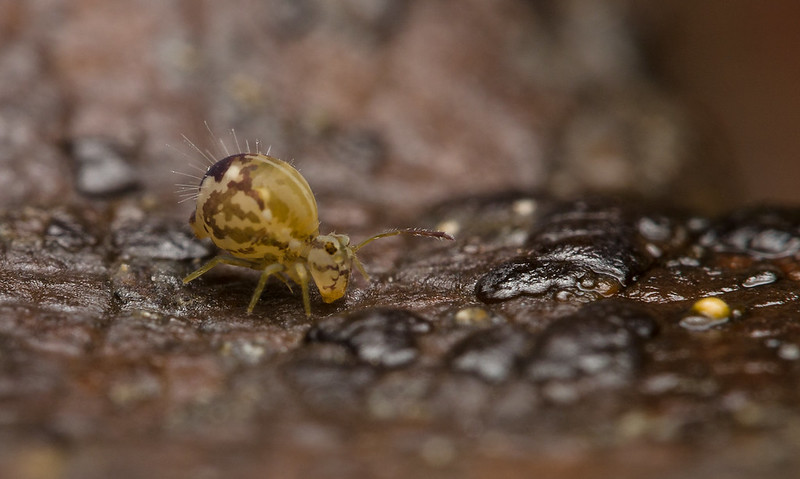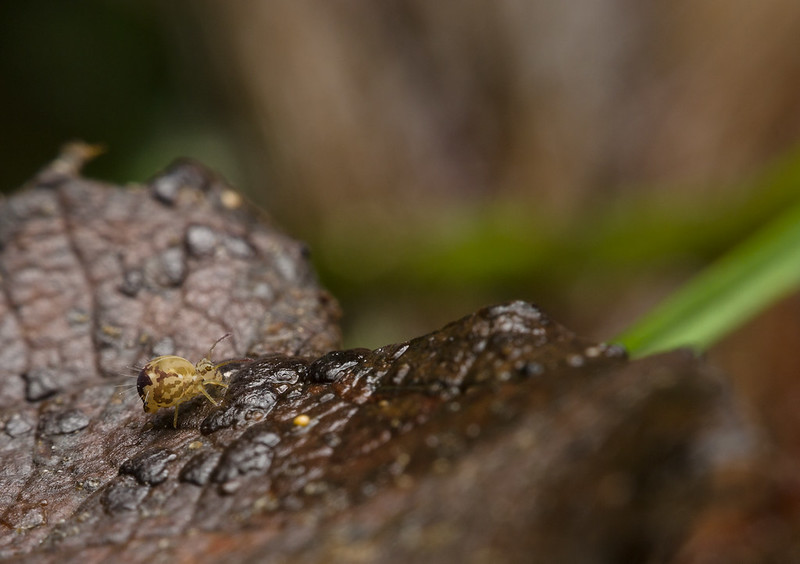GardenersHelper
In Memoriam
- Messages
- 6,344
- Name
- Nick
- Edit My Images
- Yes
Inspired by the fascinating posts here of very small animals, Springtails, Barkflies and the like, I've been trying to find something similar to photograph in our garden for several days, without much luck. The few small things I found rushed around and disappeared before I could get my act together to photograph them.
Yesterday my luck changed. This handsome little thing stayed on the same leaf for quarter of an hour and moved around at a very gentle pace so I could get some different angles on it.
According to my calculations the head and body are around 1.3mm long.
These images were captured using a Panasonic G3 micro four thirds camera hand held, with a Raynox MSN-202 close-up lens on a Panasonic 45-175 zoom lens, with illumination from a home made flash diffuser on a Metz 58 AF-2 flash unit fitted on the G3 hot shoe. The images were captured as RAW and processed in Lightroom.
There are bigger versions at Flickr if you are interested, at my standard size of 1100 pixels high.

0620 01 2014-11-16 P1850321 LR-2 Uncropped by gardenersassistant, on Flickr

0620 06 2014-11-16 P1850335 LR-3 Crop 2 by gardenersassistant, on Flickr

0620 10 2014-11-16 P1850352 LR Crop by gardenersassistant, on Flickr

0620 12 2014-11-16 P1850359 LR-2 Crop by gardenersassistant, on Flickr

0620 18 2014-11-16 P1850375 LR-2 Crop by gardenersassistant, on Flickr

0620 20 2014-11-16 P1850378 LR-2 Crop by gardenersassistant, on Flickr

0620 22 2014-11-16 P1850397 LR Crop by gardenersassistant, on Flickr

0620 25 2014-11-16 P1850400 LR Uncropped by gardenersassistant, on Flickr
Yesterday my luck changed. This handsome little thing stayed on the same leaf for quarter of an hour and moved around at a very gentle pace so I could get some different angles on it.
According to my calculations the head and body are around 1.3mm long.
These images were captured using a Panasonic G3 micro four thirds camera hand held, with a Raynox MSN-202 close-up lens on a Panasonic 45-175 zoom lens, with illumination from a home made flash diffuser on a Metz 58 AF-2 flash unit fitted on the G3 hot shoe. The images were captured as RAW and processed in Lightroom.
There are bigger versions at Flickr if you are interested, at my standard size of 1100 pixels high.

0620 01 2014-11-16 P1850321 LR-2 Uncropped by gardenersassistant, on Flickr

0620 06 2014-11-16 P1850335 LR-3 Crop 2 by gardenersassistant, on Flickr

0620 10 2014-11-16 P1850352 LR Crop by gardenersassistant, on Flickr

0620 12 2014-11-16 P1850359 LR-2 Crop by gardenersassistant, on Flickr

0620 18 2014-11-16 P1850375 LR-2 Crop by gardenersassistant, on Flickr

0620 20 2014-11-16 P1850378 LR-2 Crop by gardenersassistant, on Flickr

0620 22 2014-11-16 P1850397 LR Crop by gardenersassistant, on Flickr

0620 25 2014-11-16 P1850400 LR Uncropped by gardenersassistant, on Flickr
Last edited:

